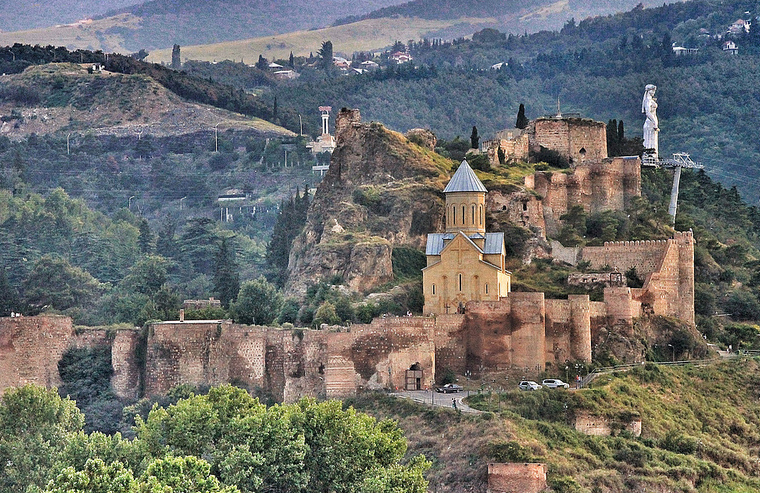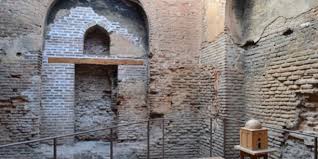Join us on a walking tour of some of the Georgian capital's oldest monuments.
METEKHI

Source: becandwebb.wordpress.com
Clearly seen perched on the hill opposite the winding cobbled streets of Old Tbilisi, and fronted by a bold statue of Tbilisi's founder, Vakhtang Gorgasali, the area as a site of importance dates back to the 5th century.
Legend claims it was also the site that the sainted martyr Lady Shushanik, heroine of the oldest known Georgian piece of literature, was buried. Since those days, various kings chose the site as a location for a court, royal palace, fortress and cathedral. In 1226, the Khwarezmid invasion headed by Jalal ad-Din raised the area to the ground.
What you see today dates from 1278-1284 but has been through several bouts of restoration.
CHURCH OF THE FORTY MARTYRS OF SEBASTE

Source: Nizhegorodets
Find this building at the foot of the slope leading up to the Botanical Gardens, recently renovated, with its yard turned into an archaeological treasure of various ages (dating back to the 5-6 centuries) for you to explore on raised pathways. St Abo of Tbilisi is said to have been beheaded here (and his temple can be seen near the river just across the bridge).
NARIKALA FORTRESS

Source: In Your Pocket
Take the cable car from Europe Square up to the Narikala Fortress. From the mountain station, you get a stunning view over the city. After a short walk, you reach the statue of Mother of Georgia (Kartlis Deda). She is holding a bowl of wine for friends in her left hand and a sword for enemies in her right. Next, have a cup of pomegranate juice before setting off to clamber the walls the fortress, which was established in the 4th century and expanded continuously. The Mongols changed its name from Shuris-tsikhe (Invidious Fortress) to Narikala Fortress (Little fortress). The St. Nicholas church in the lower court was rebuilt in 1996-1997 after the original was destroyed in a fire.
THE ZOROASTRIAN FIRE TEMPLE (3 Gomi Street)

The Zoroastrian Fire Temple (Ateshgah) is the last of its kind in Georgia, and one of only two in the South Caucasus (number two is in Baku, Azerbaijan). There were once five in the country. It was built when Georgia was a part of the Persian Empire in Sasanian era (224-651 AD). The name “Ateshgah” originates from Persian, meaning "place for fire."
The Atashgah has been preserved because it has been discreetly camouflaged in the city. Soon after construction of the Temple, Persia converted to Islam and the building was abandoned until Turks conquered the city and turned the building into a mosque in the 18th century. The Shiite Isalam-professing Iranian Shah Nadir then banished the Turks from Tbilisi and eradicated all Sunni traces from the Ateshgah.
Since 2013, the Zonouzi family, whose yard backs onto the entrance of the temple, have stood as keepers to the Atashgah. Up the steps and through the gate, inside, you'll find brick walls and a stone floor beneath a raised platform, all protected by a semi-transparent plastic roof.
